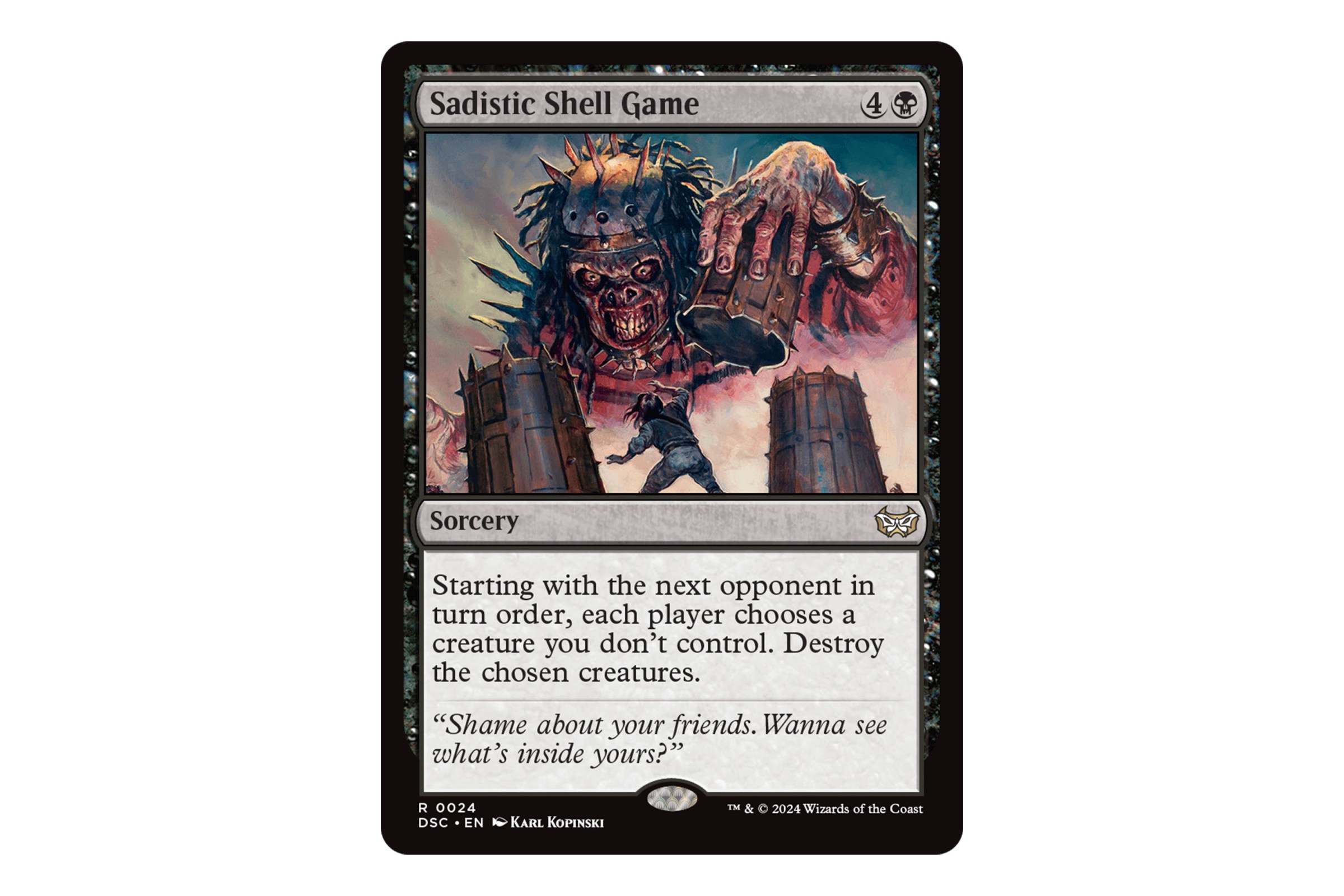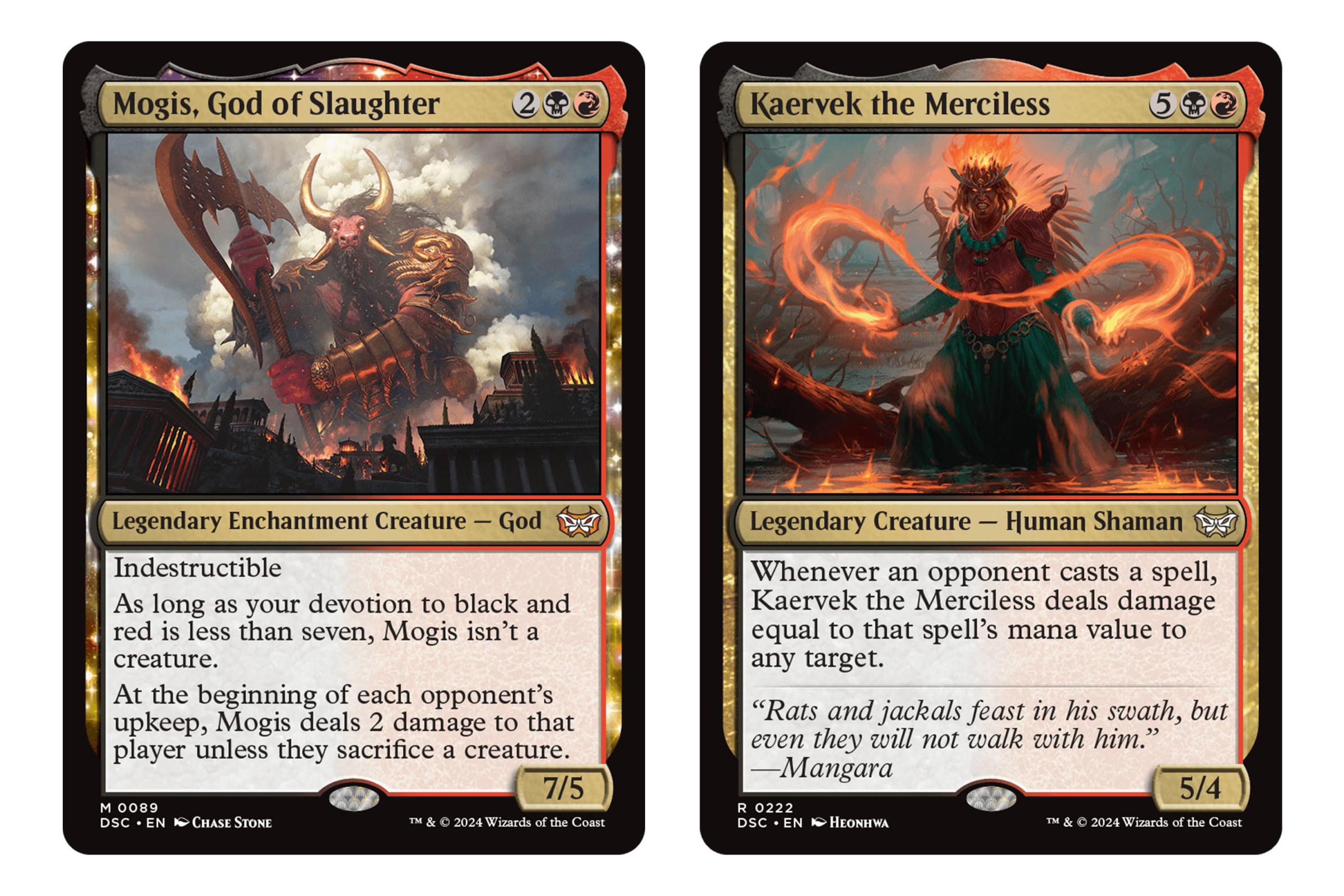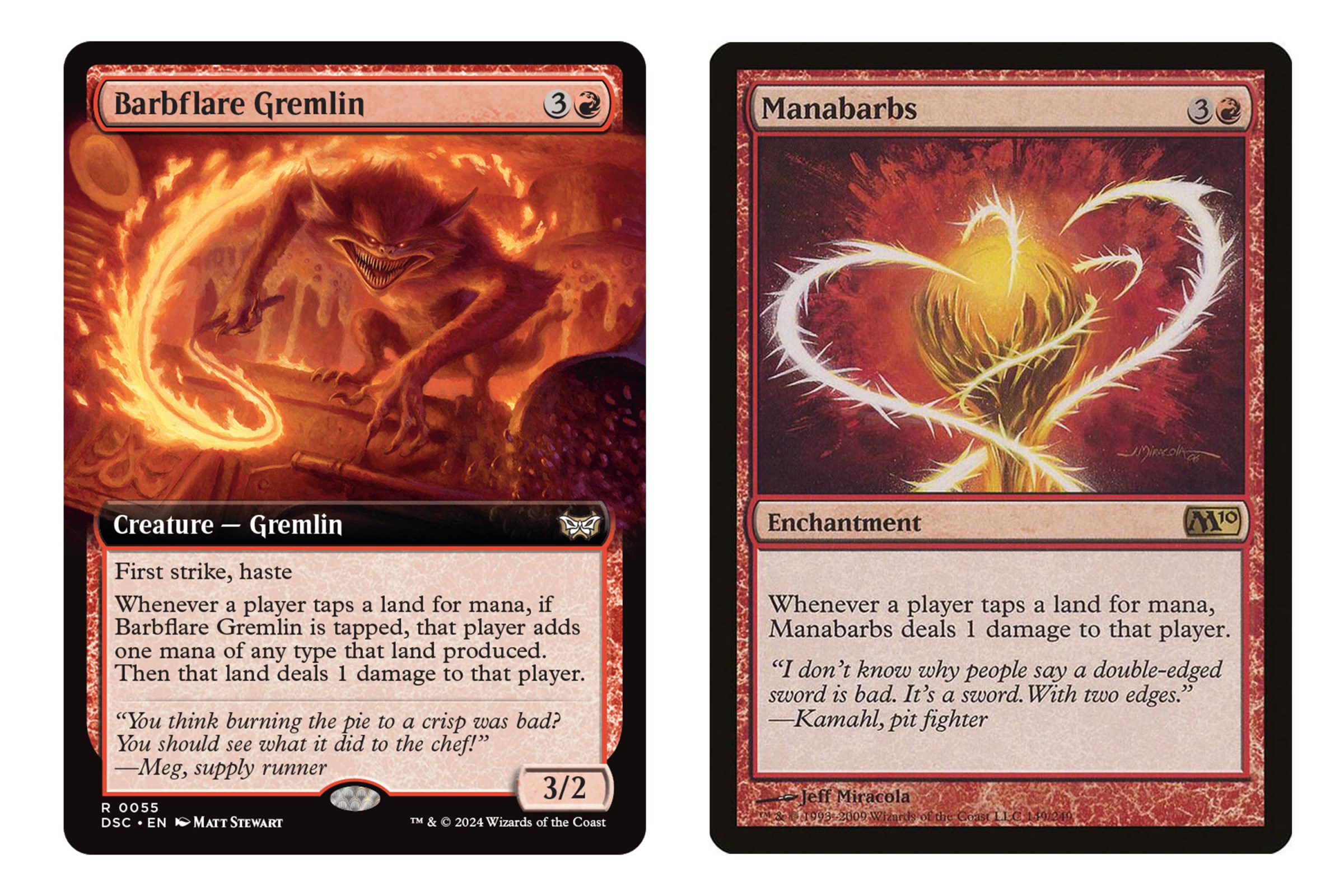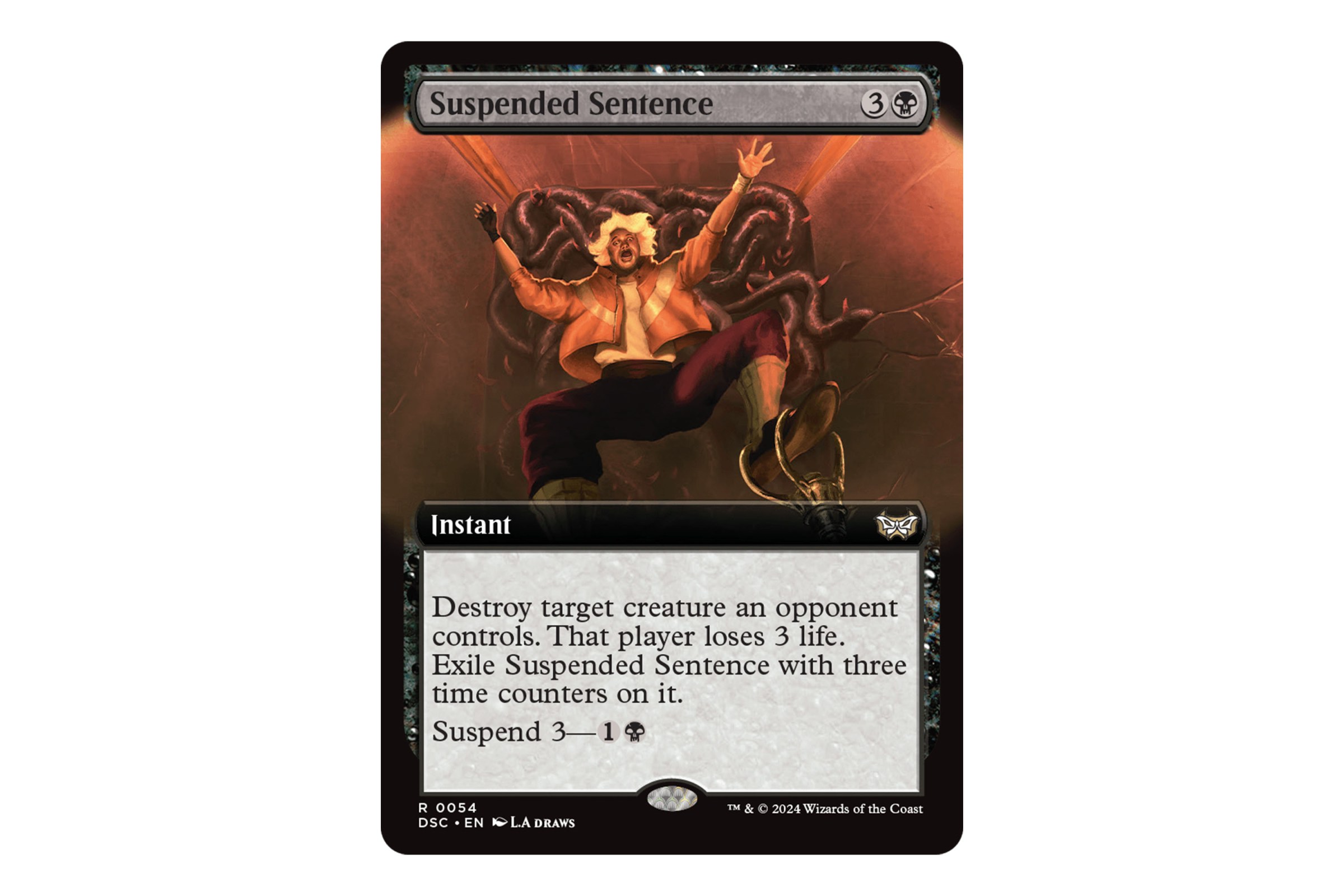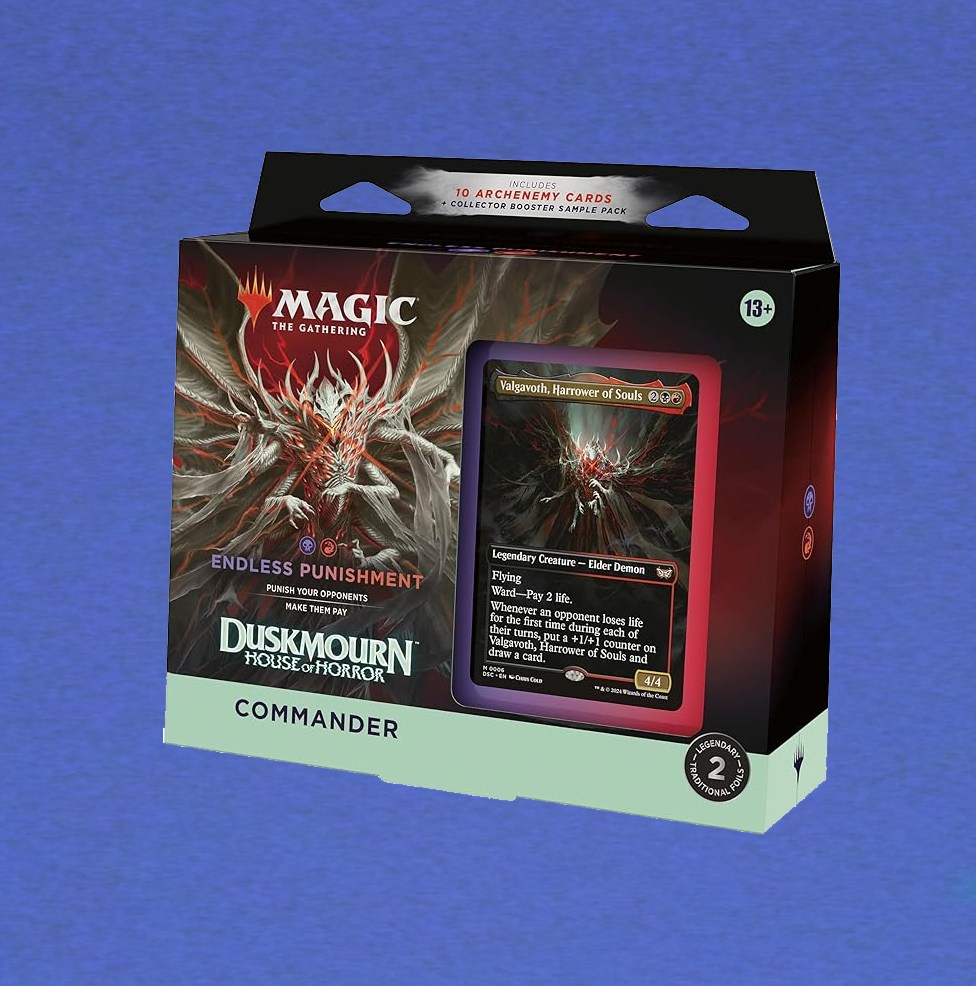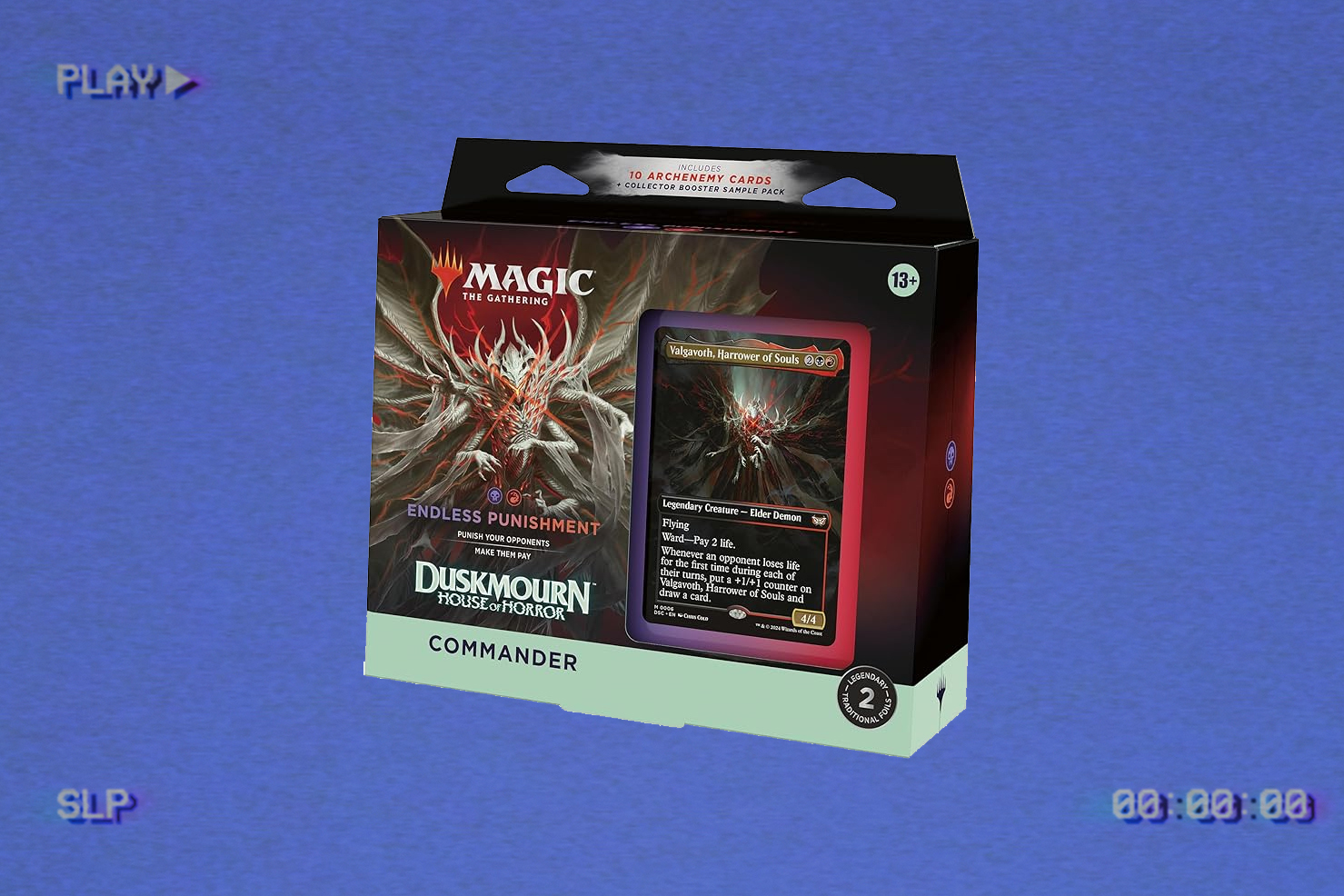How to lose friends and alienate people with Magic’s new group slug Commander deck
No one is safe when Valgavoth, Harrower of souls spreads its enormous, moth-like wings. This is the terrifying reality in the world of Twilight, Magic: the meeting‘s latest horror-themed expansion. In the latest collection of pre-constructed Commander decks, MagicIn the game’s main multiplayer format, the legendary elder demon is on full display in the red-black deck Endless punishmenta unique design for pre-built Commander decks.
“This is a group snail deck. This deck wants to hurt all your opponents; you are clearly the bad guy,” said Gavin Verhey, senior game and product designer at Wizards of the Coast, at a recent press event. “You damage all your opponents at once, make them all discard cards, make them all angry, and you’re cackling.”
While group slug is a well-known strategy among Commander players in general, the Valgavoth deck covers new ground as a pre-constructed Commander product.
“We haven’t done a red-black group slug deck before,” Verhey added. “Players have asked us for it.”
To some, being a group slug seems like an essential part of Commander’s identity. After all, a typical game involves four players battling it out in a last-person-standing deathmatch. Any alliances formed are only temporary, and dealing equal damage to all players at the same time can be a nice shortcut to sidestep the politics that emerge during multiplayer games.
It turns out that for MagicAccording to the team’s design team, having a potential villain in the room also seems to make games a little better – especially in a biodome, which is what Wizards calls the environment in which a release of pre-constructed decks are played against each other.
“I currently run three different Commander products, with Fallout, BloomburrowAnd Twilight. (…) I started to notice that when people play with these (pre-constructed) decks together in a biodome, it really helps to have one deck that does its thing,” says Annie Sardelis, senior game designer at Wizards. “Not just isolating oneself, but affecting all three people at the same time.”
Although this may be one of the first group snail strategies Magic team has designed as a ready-made product, the archetype will be familiar to Commander players. Legendary creatures such as Mogis, God of slaughter or Kaervek the Mercilessthat actually appear in the Endless punishment deck, formed the backbone of earlier versions of red-black group slug decks, and senior game designer Daniel Holt leaned on the archetype’s history to help shape Endless punishment.
“When we decided for this deck that it was a black-red group slug with Valgavoth, I just had a Hidetsugu, devouring chaos deck that was kind of a group snail theme, so I just took my personal deck and tested that on the very first playtest,” Holt recalled. “It was very mean. Maybe a little too mean, so we had to make it a little more fun.”
By definition, the group snail player can quickly become the persona non grata of a Commander game, in part because the engines behind these strategies often rely on enchantment cards to establish their ruthless game plan. The team behind it Endless punishment opted to revise this approach, both in the maps selected for the product and in the maps designed exclusively for this Commander release.
“When we’re just starting out, we usually come up with a brand new face card design and then say ‘build the rest,’” Sardelis explains. “If this deck feels like it’s missing X or Y effect, maybe we can fix that. It’s good to find out where Magic‘s history has gaps or old maps that are really weird.’
As the card and deck design unfolded, the Commander team sought to replace some of the classic group slug enablers with cards that would be easier to manage for the deck’s players, as well as their opponents.
“One of the things we did to make group snails feel approachable is that a lot of the effects are creature-related,” Holt explained. “We avoided a lot of enchantments because many decks can’t handle enchantments or other card types that are difficult to handle for certain colors. But creatures will be wiped out. Most card games can answer them in some form.
This design philosophy becomes apparent Barbflare Gremlina brand new creature appearing in this deck that combines the rules text of two older enchantments, Manabarbs And Mana flare.
However, don’t be fooled by the apparent symmetrical benefits. While it may seem like the Mana Flare effect also helps opponents, this is all part of the group slug’s sinister plan. As Holt puts it, “Nothing is free for other players.”
In a way, this also helps to capture the gruesome setting of this film Twilightand tie Endless punishment back to the overarching theme of the corresponding Magic set.
“With horror, they always make people make difficult choices, where winning is not possible. Either you lose a limb or Betty gets it,” Sardelis said. “There’s also additional trope space we can play in through the setting the game brings, and we love designing maps for our settings.”
Endless punishment highlights the potential of this trope space to open doors for more creative design that doesn’t have to fit perfectly with the overarching group slug deck. Especially if the card itself is good and impactful.
“Suspended sentence I originally threw from above, “the tension is killing me,” Holt said. “I designed the entire text box from above as that quote. So that’s why such a card is in the deck, it doesn’t really fit the theme of the deck. Although it does cause a player to lose three lives, so you get them over time.”
Endless punishment is one of the four Twilight Commander decks released worldwide on September 27. Experience the spooky season with this new release of decks from an official Twilight Party Commander takes place in local game stores from October 4 to 10 and again from November 1 to 7.
Disclosure: This article is based on a Magic: The Gathering – Duskmourn event held at Wizards of the Coast headquarters in Washington state. Wizards arranged our freelancer’s travel and accommodation for the event. Additional information about Polygon’s ethics policy can be found here.


